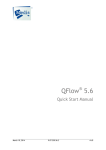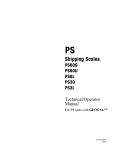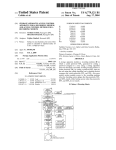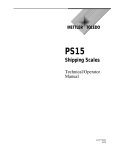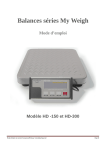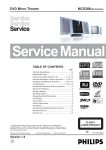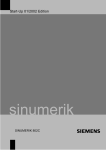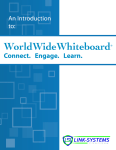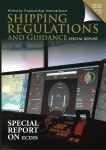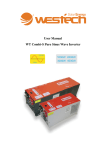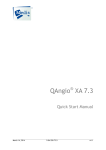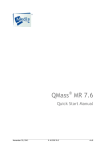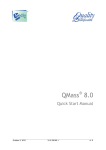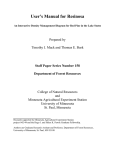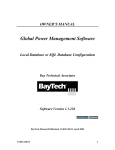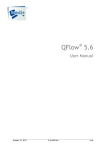Download PDF document - Eetasia.com
Transcript
Application Note VP01: Instant Voice ROM Products ISSI ISSI ® ® Integrated Silicon Solution, Inc. Application Note VP01: INTRODUCTION to ISSI's INSTANT VOICE ROM PRODUCTS DECEMBER 1997 Integrated Silicon Solution, Inc. VP005-1E 12/10/97 1 Application Note VP01: Instant Voice ROM Products ISSI Section I. Introduction ............................................................................. 53 Section II. IVR Features ............................................................................ 55 Section III. IVR Development Tools .......................................................... 58 Section IV. IS22C011/020 Selectable Options ........................................... 64 Section V. Multiple Segment Programming ............................................. 68 Section VI. IVR Applications ..................................................................... 71 ® Section VII. PC Board Layout ..................................................................... 75 2 Integrated Silicon Solution, Inc. VP005-1E 12/10/97 Application Note VP01: Instant Voice ROM Products ISSI ® Section I Introduction to ISSI’s Instant Voice ROM INTRODUCTION Instant Voice ROMs, IVRs, are specialty devices for storing and playing sound. IVRs utilize ISSI’s EPROM technology together with sound synthesis and D/A technology to make instant sound storing and playing possible. The ISSI IVR products contain an EPROM, ADPCM sound decoder, and an A/D circuit. Users first prepare an 8-bit PCM sound file and then use the ISSI IVR development system to do the ADPCM encoding. The encoded data is programmed into a IVR device by using our IVR writer. The sound is ready to be played back from the IVR through either a speaker or buzzer. IVRs Compared to Mask Programmed Voice ROM Conventional voice ROM utilizes mask ROM technology to store sound data. A semiconductor manufacturing photo mask corresponding to the sound data has to be made. With this mask, the sound data can be permanently programmed to the memory during wafer fabrication. It is this requirement of mask making and wafer fabrication that makes the mask ROM approach inflexible. Mask making and wafer fabrication are both time consuming. Normally, it takes several weeks to get the first masked devices ready for delivery. The cost of making this special mask is always (directly or indirectly) paid by customer, and is the so called NonRefundable Engineering (NRE) charge for making a particular sound code. There is also a Minimum Order Quantity (MOQ) requirement because each wafer fabrication house has its minimum manufacturing lot size. MOQ may vary from one company to another, but normally it is around 10K for each sound code. Integrated Silicon Solution, Inc. VP005-1E 12/10/97 3 Application Note VP01: Instant Voice ROM Products ISSI ® IVR on the other hand, does not suffer from these drawbacks of sound ROMs. First, the IVR is based on OTP EPROM technology. Sound data is programmed into the memory by an electrical signal, so no special, expensive optical mask is needed. Also, users can quickly generate and program sound data using one of our user-friendly development systems within their own factory. ISSI has available all the tools needed to support either one piece programming or mass production programming, so there is no MOQ requirement. IVRs Compared to Single Chip Record-and-Playback Sound A single chip record-and-playback sound IC consists of a built-in microphone amplifier, filters, A/D, D/A, and a power amplifier to drive a speaker. EEPROM or SRAM is the normally memory for sound data storage, with some being on-chip memory and some external memory. To record sound, the chips must include many analog circuits, e.g., A/D, filter and microphone preamplifier, as well as memory. Cost is high for such integration. Of course, if you really want a single chip to do sound record and playback, you have to choose this high-priced part. However, in many applications, users only want to record into the chip once, and never want it to be changed. For such applications, choosing record and playback chips still requires the user to pay for those unused analog circuits. With IVR and our Stand-alone Record And Playback Programmer, no computer is required. The user can record sound similarly to a single-chip record and playback sound chip using a small writer board (one of the ISSI’s IVR support tools). To program the IVR, you just record sound in the writer board using a microphone, then simply press a button and the sound you recorded will be programmed into the IVR. Once programmed, the data can never be lost or overwritten. 4 Integrated Silicon Solution, Inc. VP005-1E 12/10/97 Application Note VP01: Instant Voice ROM Products ISSI ® Section II Features of the Instant Voice ROM (IVR) Very Good Sound Quality ISSI’s proprietary ADPCM algorithm is used for sound data encoding and compression. Each 8-bit PCM file is compressed into 4-bit data to be stored. It is decoded back to 8-bit sound data by the IVR during playback. The sound quality therefore is much better than the 4- or 5-bit PCM, which is used in most sound products today. User Friendly Development Tools The IVR is most often programmed by the user, so ISSI provides a full set of development tools. We have both Personal Computer (PC) based and stand-alone types of development systems. The PC based sound editing system is the most complete development system for ISSI IVRs. It consists of a user supplied sound system, a PC compatible sound card, and the ISSI IVR programmer board. There are two types of programmer boards. One is a single piece writer which can program one device at a time. This programmer is suitable for sample or master making. Another is a multiple programmer board which can program up to 20 pieces and is designed for small quantity programming. System software is provided for device programming. Please refer to the PC Based Programming System (IS22VP003/004/006) User's Manual for details. There are several types of stand-alone programmer boards and each work without a PC. A DC power supply is the only requirement for these programmers. To facilitate user mass programming, an IVR copier is used to copy data from a programmed master IVR to as many as eight blank IVRs. Integrated Silicon Solution, Inc. VP005-1E 12/10/97 5 Application Note VP01: Instant Voice ROM Products ISSI ® ISSI offers a stand-alone record and playback IVR programmer board with a built-in microphone and preamplifier. The sound is first recorded into an on-board SRAM. After listening to and approving the recorded sound, the board does the ADPCM encoding and programs the data into a blank IVR. Therefore, the user can record and program the IVR without using a PC. Flexible Phrases Each IVR has a fixed memory size and the memory can be divided into as many as eight separate phrases. The length of each phrase is user programmable, and the only restriction is that the total length of all phrases shall not exceed the maximum capacity of the IVR. The capacity of each IVR depends not only on the memory size, but also on the sampling rate used to record the sound. For example, the IS22C011 has 256K bits of memory. If the sampling rate is 8000 Hz, the maximum length is eight seconds. If the sampling rate is 6000 Hz, the maximum length is ten seconds. Stable Built-in Oscillator The sampling rate of each IVR is set by a very stable built-in oscillator controlled by an external resistor. For the IS22C011, a 2 MΩ resistor will set the sampling frequency at approximately 8000 Hz. Therefore, the sampling rate setting is very simple. The built-in oscillator is specially designed for high stability. The oscillator frequency remains constant at all supply voltages within the allowable range of the product specification. As a result, the sound quality will not decay as the battery voltage falls off with use. 6 Integrated Silicon Solution, Inc. VP005-1E 12/10/97 Application Note VP01: Instant Voice ROM Products ISSI ® User Programmable Options Each IVR can be user programmed with different options. During ADPCM coding, the software will merge the option information with the sound data. With this feature, the user can try different options quickly and easily. For the type of available options, please consult the device data sheet or the Selectable Option Section of this application note (page 64). Wide Supply Voltage Range and Power Saving IVRs utilize CMOS technology, so a single power supply from 2.4V to 6.0V is allowed. After sound playback, the chip will power down automatically and enter the standby mode requiring very low current. Even a ‘coin cell’ can supply power to the IVR for some time making many small and compact applications possible. Direct LED Drive There are two output pins designed to directly drive a single LED. If more than two LEDs or higher power lamps are used, an external transistor can be added. Current Mode D/A Output Current mode D/A output, COUT, makes it easy to drive a speaker with as little interface circuitry as a simple low cost NPN transistor. No complex filtering or amplifier circuit is necessary. Adding a filter and power amplifier to this output gives a higher quality playback sound. PWM Voltage Output To extend the range of applications, a pair of PWM output pins, VOUT1 and VOUT2, will directly drive a speed grade “buzzer”. Sound quality is comparable to a speaker but the power consumption is much lower. With a buzzer as the output, the user can make a very thin sound module, with very low power consumption. Integrated Silicon Solution, Inc. VP005-1E 12/10/97 7 Application Note VP01: Instant Voice ROM Products ISSI ® Section III Development Tools For Instant Voice ROM ISSI provides a series of support tools to program or playback sound from the IVR. This section will help the user decide which tool is most suitable for each particular situation. The following IVR development tools are available: IS22VP001 Playback demonstration board IS22VP002 Stand-alone record and playback board IS22VP003 PC based 1-piece ISA slot add-in programmer IS22VP004 PC based 20-piece ISA slot add-in programmer IS22VP005 1-to-8 copier board IS22VP006 PC based 1-piece printer port programmer IS22VP003, IS22VP004, and IS22VP006 PC-Based Programmers IS22VP003, IS22VP004, and IS22VP006 are PC based sound recording and editing systems. These systems are usually used when high-quality sound is required, and the sound source is a cassette tape, CD, or DAT tape. The IS22VP003 and IS22VP004 programmers consist of a PC add-in card and a writer board. The IS22VP003 programs one DIP packaged IVR chip each program cycle and it is suitable for making a master sample. The IS22VP004 can program from one up to a maximum of 20 DIP packaged chips at the same time and is suitable for in-house small volume production. Cost is another consideration. The IS22VP003 is less expensive than the IS22VP004. Other ISSI programmers are available for mass production. The IS22VP006 interfaces with the PC through the printer port and the keyboard socket and performs like other programmers. 8 Integrated Silicon Solution, Inc. VP005-1E 12/10/97 Application Note VP01: Instant Voice ROM Products ISSI ® To use any of the programmers, the user should install a sound system with equipment suitable to playback the sound source. A preamplifier and equalizer are recommended for better sound quality. In order to record the sound into the computer, a sound card must be installed. Testing has shown that the Creative Lab Sound Blaster™ card (8 or 16 bits) is compatible with our hardware and software. Finally, either the IS22VP003 or IS22VP004 card should be installed in the computer or the IS22VP006 connected to the appropriate port. For detailed installation information, please refer to the PC Based Programming System User's Manual for details. Figure 1 shows the hardware configuration of a PC based editing and programming system. 286/386/486 Computer 20-piece Writer Figure 1. PC Based Editing and Programming System. The sound is recorded by the sound card and becomes a file stored in the computer. After editing the sound, the user can call up the ISSI IVR sound compression software for ADPCM coding and compression. Programmable features of the IVR most suitable for each application are selected at this time. The ADPCM coding program produces an encoded sound file containing sound and option information. This file can then be programmed into the IVR. Either the IS22VP003, IS22VP004, or IS22VP006 programmer can be used to program the chip. Integrated Silicon Solution, Inc. VP005-1E 12/10/97 9 Application Note VP01: Instant Voice ROM Products ISSI ® Figure 2 is the production flow using the IS22VP003, IS22VP004, and IS22VP006 programmers. Cassette, Tape, DAT, CD Voice Recording and Editing NO Accept Quality? YES Option Select and ADPCM Coding NO Successful? YES Programming Using IS22VP003/004/006 Programmed IVR Figure 2. PC Based Production Flow. 10 Integrated Silicon Solution, Inc. VP005-1E 12/10/97 Application Note VP01: Instant Voice ROM Products ISSI ® IVR Copiers IVR copiers are single board IVR programmers which work without a PC. They need only a 15V DC power supply and copy sound data from a programmed master IVR chip to blank IVR chips. Users can make a master IVR from the PC based programmers. The 1-to-8 copier (IS22VP005) can copy data from the master to a maximum of eight blank IVR chips simultaneously and is a low cost system for programming DIP packaged IVRs. Mass production can be done by using this copier board to program up to eight blank chips at a time, and more copiers can be employed for larger volumes. A 1-to-1 IVR copier is available on special order and is designed to program only one chip at a time. This is suitable for COB (chip on board) assembly programming. As each chip is bonded to the PC board, it can be programmed prior to encapsulation. Figure 3 shows a flow for programming IVR chips during COB manufacturing. Integrated Silicon Solution, Inc. VP005-1E 12/10/97 11 Application Note VP01: Instant Voice ROM Products ISSI ® Blank IVR Die Attach and Bonding Master IVR 1-to-1 Programming UV Erase NO Verify OK? YES Encapsulation Final Test Finished COB Figure 3. COB Programming Flow Using an ISSI IVR Copier. COB is a low cost packaging alternative for low end products. IVR users can order blank die and have a COB bonding house do the packaging and test. As in Figure 3, the blank IVR is attached to the substrate and bonded to a custom made PCB. A test jig, with a cable connection to the IVR copier socket, is used to transfer encoded sound data from the master to the die on the PCB. If the programming is successful, the COB is then encapsulated. Otherwise, the COB should be examined and, if necessary be UV erased (contact ISSI for special instructions concerning UV erase) and reworked. Please note 12 Integrated Silicon Solution, Inc. VP005-1E 12/10/97 Application Note VP01: Instant Voice ROM Products ISSI ® that in order to be UV erasable, the working environment should be very clean. Dust on the memory area of the chip will cover some memory cells and block the UV light and stop erasure. Using the ISSI copier, low cost in-house mass programming is possible. Production volume is very flexible and totally controlled by the users. Delivery, of course, is not a problem once the users have a stock of blank IVRs. Large Volume IVR Programming If a particular sound is to be programmed in a quantity of more than a few thousands, it may be more economical to purchase pre-programmed IVRs. ISSI offers a factory programming solution for high-volume production so that during wafer testing, the sound data (which was submitted to ISSI and approved by the customer), will be programmed onto the IVR. The shipped devices will be die with sound data preprogrammed, which is very similar to buying a sound ROM. However, there is no NRE charge and no long lead time. The quantity will be a multiple of the number of good die per wafer so there is no MOQ issue. IVR Standalone Record and Playback Programmer The ISSI IS22VP002 programmer board can record, playback, and program IVR chips without requiring a PC. Sound can be directed to the on-board microphone, recorded into on-board SRAM, and played back through the on-board speaker. If the sound is acceptable, a blank IVR is programmed with the sound stored in the on-board SRAM. This programmer demonstrates the OTP instant recording capability of the IVR. With this writer, a user can program IVRs similarly to single chip record and playback ICs. This concept is particular useful in the personalized greeting cards, gifts, and similar markets. Since most applications have different requirements, our application engineers can work with customers to develop custom programs. Integrated Silicon Solution, Inc. VP005-1E 12/10/97 13 Application Note VP01: Instant Voice ROM Products ISSI ® Section IV Selectable IS22C011/020 Options This application note explains in detail the several user programmable IS22C011/020 options. Option information is stored in the on-chip memory together with the sound data. These options are selected and programmed by users during the normal ADPCM coding. Pulsed or Level Sensitive Triggers There are two kinds of triggering methods for the IS22C011/020. When using a pulsed trigger, a HIGH signal (i.e., voltage equals VCC) applied to a trigger pin longer than the debounce time (about 30 ms), the chip plays back the whole phrase. IS22C011/020 is not re-triggerable, so when the chip is playing, another HIGH signal applied on any trigger pin will not trigger the chip until the play is completed. Figure 4 shows the pulsed trigger. S1 Audio Out Phrase 1 Phrase 1 Phrase 1 Figure 4. Pulsed Trigger. In the level sensitive trigger mode, the IS22C011/020 will play only if a HIGH signal is kept at the trigger pin. Once the HIGH signal is removed, playback stops immediately. See Figure 5. 14 Integrated Silicon Solution, Inc. VP005-1E 12/10/97 Application Note VP01: Instant Voice ROM Products ISSI ® S1 Phrase 1 Audio Out Phrase 1 Phrase 1 Figure 5. Level Sensitive Trigger. In both trigger modes, if the HIGH signal is longer than the playing phrase, the phrase will repeat playing again. Stop or Busy Signal IS22C011/020 provides a status signal on the STP/BUSY pin. When the STOP option is selected, the STP/BUSY will output a HIGH pulse at the end of audio playback. The pulse width is approximately 30 ms. If the BUSY option is selected, the pin will output a HIGH signal during audio playback. Figure 6 shows the difference. Stop Option Busy Option Audio Out STP/BUSY Figure 6. Stop or Busy Option. Non-Sequential or Sequential Playall If the IS22C011/020 is programmed with more than one sound phrase, the SBT trigger pin can be programmed in non-sequential or sequential play-all modes. For nonsequential play-all, the SBT pin will trigger the chip to play all phrases in order. For sequential play-all, the chip will play each phrase, one by one, whenever the SBT pin is triggered. After all phrases are played once, the chip will play the first phrase again and the cycle repeats. Figures 7 and 8 show these options together with the pulsed and level sensitive option. Integrated Silicon Solution, Inc. VP005-1E 12/10/97 15 Application Note VP01: Instant Voice ROM Products ISSI ® SBT Audio Out Phrase 1 Phrase 2 Phrase N Phrase 1 Phrase N Phrase 1 a. One shot trigger SBT Audio Out Phrase 1 Phrase 2 Phrase 1 Phrase N Phrase 1 b. Level hold trigger Figure 7. Non-Sequential Playall. SBT Audio Out Phrase 1 Phrase 2 Phrase 2 Phrase 2 Phrase N Phrase 1 Phrase N Phrase 1 a. One shot trigger SBT Audio Out Phrase 1 Phrase 2 Phrase 2 Phrase 2 b. Level hold trigger Figure 8. Sequential Play. 16 Integrated Silicon Solution, Inc. VP005-1E 12/10/97 Application Note VP01: Instant Voice ROM Products ISSI ® Ramp-Up and Ramp-Down Options The Ramp-Up/Down option affects only the speaker drive output (COUT) pin and will not affect the PWM buzzer driving VOUT1 and VOUT2 pins. Since each IVR chip will automatically power down after playback, current output from COUT will drop from a certain value to zero. If the current drops suddenly, a ‘pop’ sound will be heard through the speaker. To reduce this ‘pop’ noise, a smooth current ramp down circuit is used by the IVR. Instead of suddenly dropping, the current will gradually decrease to zero. Options Setting All options are set during ADPCM coding, which is done with the PC based voice programming system software. The ACODING command is accessed by pressing the letter ‘A’. After entering the number of sound phrases and the name of the file to be encoded, the software will ask you to select options by answering ‘yes’ or ‘no’. The option data will be merged with sound data to form a data file which is ready for IVR programming. After each ADPCM encoding, a file with .LOG extension will be created and it contains all the information including the sound file name for each phrase and the option setting information. Integrated Silicon Solution, Inc. VP005-1E 12/10/97 17 Application Note VP01: Instant Voice ROM Products ISSI ® Section V Multiple Phrase Programming For the IS22C011/020 As indicated in the product specifications, ISSI IVRs can be programmed into multiple sound phrases. Up to eight phrases can be programmed into a single IS22C011/020 device. The time duration of each phrase is not fixed but the total time must not exceed the total time the chip can support, i.e., eight seconds for 8 KHz sampling. Multiple Phrase Encoding Separate sound files for each phrase in .VOC format should be prepared. The sound files are merged together with option information during ADPCM encoding. The ADPCM encoding is started by selecting the ACODING sub-command 'A'. The number of phrases will be asked for. Type in the number of sound files to be programmed into the IS22C011/020 device. After reading the number, the file names will be requested. Type in the sound files you have edited, but do not use the “.VOC” extension. The software will then ask for option information and simply answer ‘yes’ or ‘no’ to set each option. The ADPCM encoding software will merge all the sound files and option information to form a new data file with the extension “.DPM” which is then ready for programming into the IS22C011/020 device. After each ADPCM encoding, a log file with a .LOG extension will be generated which records the information for ADPCM encoding, including a sound file for each phrase, the option settings, the start and end address of each phrase, etc. 18 Integrated Silicon Solution, Inc. VP005-1E 12/10/97 Application Note VP01: Instant Voice ROM Products ISSI ® Several new files are generated after ADPCM encoding. They are listed below: • filename.DPM - encoded sound data and option information to be written into the IVR chip. • filename.LOG - log file with the details of the .DPM sound data file. • filename.QAN - emulation of compressed sound in the .VOC format. The user can listen to this file and hear the sound which is very similar to the chip’s output. Playback of Multiple Phrase Sound playback is triggered by applying a HIGH signal (i.e., voltage = VCC) to the four triggering pins S1, S2, S3, and S4. Up to eight phrases can be stored in the chip. These are triggered by four pins, and the table below shows the coding required to trigger each phrase. Phrase one two three four five six seven eight Integrated Silicon Solution, Inc. VP005-1E 12/10/97 Trigger Pin S1 S2 S3 S4 S1 and S2 S2 and S3 S3 and S4 S1 and S4 19 Application Note VP01: Instant Voice ROM Products ISSI ® Figure 9 shows the circuit diagram for triggering all eight phrases. The first four phrases are triggered by switches SW1 to SW4. These are simple single pole push buttons. Use switches SW5 to SW8 for phrases five to eight. These are double pole push buttons. Both types of buttons can be implemented by a custom PCB layout and rubber contacts for minimum cost. SW8 VCC ROSC SW5 SW1 SW6 SP OSC S1 COUT SW2 S2 SW7 SW3 SW4 S3 S4 GND Figure 9. Multiple Phrase Trigger Circuit. 20 Integrated Silicon Solution, Inc. VP005-1E 12/10/97 Application Note VP01: Instant Voice ROM Products ISSI ® Section VI Application Circuits For Instant Sound ROM IVR series of devices are designed for a wide range of applications. This application note gives some examples of circuits for different applications. Playback Using Piezo Buzzer 4.5V ROSC VCC VOUT1 OSC VOUT2 S1 S2 S3 S4 SBT IRP PIEZO BUZZER GND Figure 10. Direct Drive Buzzer. Each IVR offers a pair of buzzer driving pins, VOUT1 and VOUT2, which directly drive a piezo buzzer. Since a buzzer is a voltage driven device, VCC should be at least 4.5V for acceptable loudness. Buzzers used should be the double sided, sound grade ‘Piezo Speaker’ types. Buzzers are normally not suitable for melody sounds. Integrated Silicon Solution, Inc. VP005-1E 12/10/97 21 Application Note VP01: Instant Voice ROM Products ISSI ® The advantage of using a buzzer is that the thickness of the playback module can be extremely small and hence is suitable for greeting card type applications. Also, buzzers require very little power, usually only a very few milliamps (typically 20 mA). A ‘Coin Cell’ battery is usually powerful enough for most applications. The only drawback is the relatively low sound volume from a buzzer when compared to a speaker. However, optimum buzzer mounting and casing can increase sound volume. Playback With Single Transistor The COUT audio pin is specially designed for driving speakers through an NPN transistor. The output current is biased for 3V applications. Figure 11 shows the circuit for a single transistor output. 3.0V VCC ROSC SP OSC S1 S2 S3 S4 SBT IRP COUT 8050C GND Figure 11. Single Transistor Playback. 22 Integrated Silicon Solution, Inc. VP005-1E 12/10/97 Application Note VP01: Instant Voice ROM Products ISSI ® For supply voltages larger than 3.0V, an additional base resistor RB should be added to the base of the transistor. RB should be from 190 to 470 Ohms depending on the VCC value and the sound volume required. VCC > 3.0V VCC ROSC SP OSC S1 S2 S3 S4 SBT IRP COUT RB 8050C GND Figure 12. Single Transistor Playback Circuit for VCC > 3.0V. Figure 13 shows the circuitry for applications that require immediate Stop Play of current section triggered, allowing Start Play of next section triggered. This circuitry can only be applied to S1 through S4 and must be applied to each pin individually. VCC SP OSC 100Ω COUT 8050C S1-S4 1µf IRP GND Figure 13. Stop-Start Triggering Circuit Integrated Silicon Solution, Inc. VP005-1E 12/10/97 23 Application Note VP01: Instant Voice ROM Products ISSI ® Section VII Example PC Board Layout This example PC board demonstrates how to playback with ISSI’s voice chips. It supports three different modes of playback: Buzzer, Transistor and Power Amplifier. To hear playback through a buzzer, simply plug a double side buzzer into the JP2 output port. To hear playback through a transistor, the JP4 jumper should be plugged to the TX side and an 8Ohm speaker should be connected to the JP1 jack. To hear playback through an operation amplifier, the JP4 jumper should be plugged to the AMP side and an 8Ohm speaker should be connected to the JP5 jack. A 4.5V DC power should be connected to JP3. Make sure the polarity is correct. Select the correct sampling rate by turning the VR1. This PC board can support the sampling frequency from around 5 KHz to 15 KHz. VR2 is the volume control when the board is set to the amplifier playback mode. S1 to S4 can be used to trigger the playback of voice sections 1 to 4 respectively. The SBT can be used to playback all the voice content of the chip sequentially or one time play-all. 24 Integrated Silicon Solution, Inc. VP005-1E 12/10/97 Application Note VP01: Instant Voice ROM Products ISSI ® Single-Chip Demo Board Note: Not drawn to scale Single-Chip Demo Board Component Side PC Layout Note: Not drawn to scale Single-Chip Demo Board Solder Side PC Layout Note: Not drawn to scale Integrated Silicon Solution, Inc. VP005-1E 12/10/97 25 Application Note VP01: Instant Voice ROM Products ISSI ® NOTICE Integrated Silicon Solution, Inc., reserves the right to make changes to the products contained in this publication in order to improve design, performance or reliability. Integrated Silicon Solution, Inc. assumes no responsibility for the use of any circuits described herein, conveys no license under any patent or other right, and makes no representation that the circuits are free of patent infringement. Charts and schedules contained herein reflect representative operating parameters, and may vary depending upon a user's specific application. While the information in this publication has been carefully checked, Integrated Silicon Solution, Inc. shall not be liable for any damages arising as a result of any error or omission. Integrated Silicon Solution, Inc. does not recommend the use of any of its products in life support applications where the failure or malfunction of the product can reasonably be expected to cause failure of the life support system or to significantly affect its safety or effectiveness. Products are not authorized for use in such applications unless Integrated Silicon Solution, Inc. receives written assurances, to its satisfaction, that: (a) the risk of injury or damage has been minimized; (b) the user assumes all such risks; and (c) potential liability of Integrated Silicon Solution, Inc. is adequately protected under the circumstances. Copyright 1997 Integrated Silicon Solution, Inc. Reproduction in whole or in part, without the prior written consent of Integrated Silicon Solution, Inc., is prohibited. ISSI Headquarters U.S. Office 2231 Lawson Lane Santa Clara, CA 95054 800-379-4774 Tel. 408-588-0806 Fax Taiwan Office 7F, 106 Sec 1, Shin Tai Wu Rd. Hsi-Chih, Taipei Hsien, Taiwan, R.O.C. 8862-696-2140 Tel. 8862-696-2252 Fax China Office — Shanghai Rm. 1004-1005, Astronautics Bldg No. 222 Cai-Xi Rd., Xu-Hui District, Shanghai, 200233 China 021-648-20697 Tel. 021-648-22286 Fax 26 ® Sales Offices China Office — Shenzhen 5/F, 24 Bldg., Ke-Yuan Rd., Science & Industry Park, Nan-Shan District, Shenzhen 518057 China 0755-6633977 Tel. 0755-6633984 Fax Hong Kong Office Room 301A, 3/F, 113 Argyle Street Mongkok Kowloon, Hong Kong 852-2319-2212 Tel. 852-2319-2004 Fax Europe Office Behringstrasse 10 D 82152 Planegg Germany 49(89) 899-30193 Tel. 49(89) 899-0399 Fax Northeast U.S. Office 11 North Eastern Blvd. Suite 310 Nashua, NH 03062 603-594-4176 Tel. 603-594-4181 Fax Southeast U.S. Office 6200 Falls of Neuse Road Suite 200 Raliegh, NC 27609 919-871-9990 Tel. 919-871-9991 Fax Northcentral U.S. Office 1807 Hicks Road Suite C Rolling Meadows, IL 60008 847-776-1670 Tel. 847-776-1655 Fax Southcentral U.S. Office 2695 Villa Creek Suite 275 Dallas, TX 75234 972-488-9691 Tel. 972-488-9690 Fax Southwest U.S. Office 8 Corporate Park Suite 300 Irvine, CA 92606 714-442-8384 Tel. 714-442-8338 Fax. Integrated Silicon Solution, Inc. VP005-1E 12/10/97



























